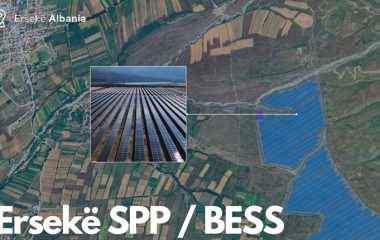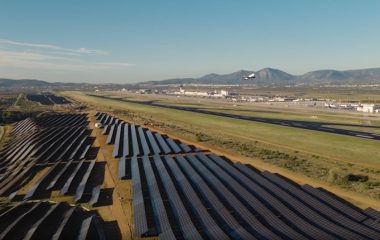
Photo: Pixabay
Belgium’s Elicio has completed the construction of the 42 MW Alibunar wind farm with 21 turbines, which will supply electricity to 38,000 households. The launch ceremony was attended by Serbian Minister of Mining and Energy Aleksandar Antić.
The Alibunar wind farm, whose construction has soaked an investment of EUR 80 million, will result in the displacement of 88,000 tonnes of CO2 emissions annually.
Another 200 MW of wind capacity will be connected to the grid by the end of 2018, plus a further 200 MW by the end of 2019, which will round off the targeted 500 MW of wind energy capacity in Serbia, Antić said at the opening ceremony, also noting that the Alibunar wind farm is the single largest energy capacity connected to the grid in Serbia since 1991, when the Pirot hydropower plant was completed.
Ministar @AAnticBG na otvaranju vetroparka @eliciosrbija u Alibunaru
Slika energetski odgovorne, moderne Srbije
Alibunar sa 42 MW najveći pojedinačni projekat koji se pušta na mrežu u poslednjih 27god
Do kraja godine još 200 MW iz energije vetra,dostižemo cilj od 500 MW do 2020. pic.twitter.com/O9DuYirjSU— mre (@MiningEnergyRS) September 11, 2018
The producer of the Alibunar wind farm’s turbines, each of which with a capacity of 2 MW, is Germany’s Senvion.
The International Financial Corporation (IFC), a member of the World Bank Group, backed the Alibunar project with a EUR 19.1 million loan. Unicredit, the Netherlands Development Finance Company (FMO), and the Green for Growth Fund (GGF) provided another EUR 40 million for the project.
8 MW Malibunar wind farm preceded Alibunar
Elicio previously completed the construction of the 8 MW Malibunar wind farm in 2017. The investment in the four-turbine Malibunar wind farm totaled EUR 8 million. Malibunar is planned to generate 25 GWh of electricity annually.
Both the Malibunar and Alibunar wind farms are subsidized under the feed-in tariff, financed by consumers through electricity bills. Serbia targets a 27% share of renewable energy sources, such as wind energy, in gross consumption by 2020.
Launch of Serbia’s largest wind farm expected in early 2019
In the meantime, Čibuk 1 has reached a number of key milestones and is on schedule to start production in early 2019, according to a press release from the United Arab Emirates’ (UAE) Masdar, the majority stakeholder in Tesla Wind, which owns Vetroelektrane Balkana, the project company behind Čibuk 1, set to become Serbia’s largest wind farm.
GE Renewable Energy, which has supplied the 57 wind turbines for Čibuk 1, tweeted that the 158 MW wind farm is expected to start production “earlier than initially planned.”

















Be the first one to comment on this article.